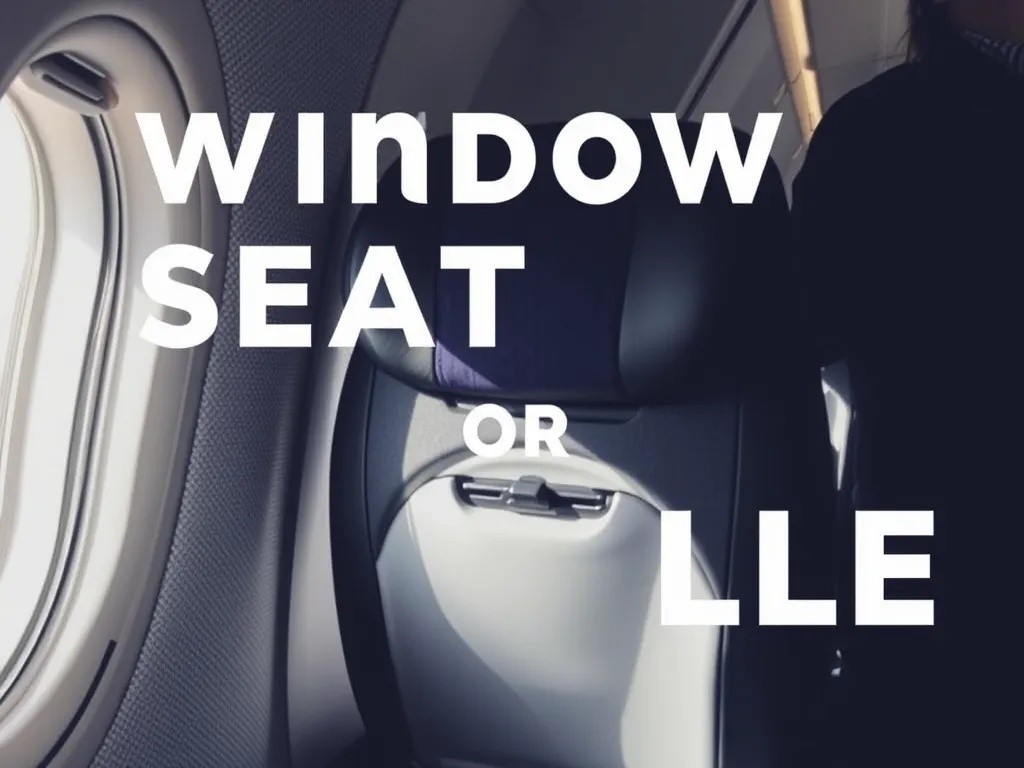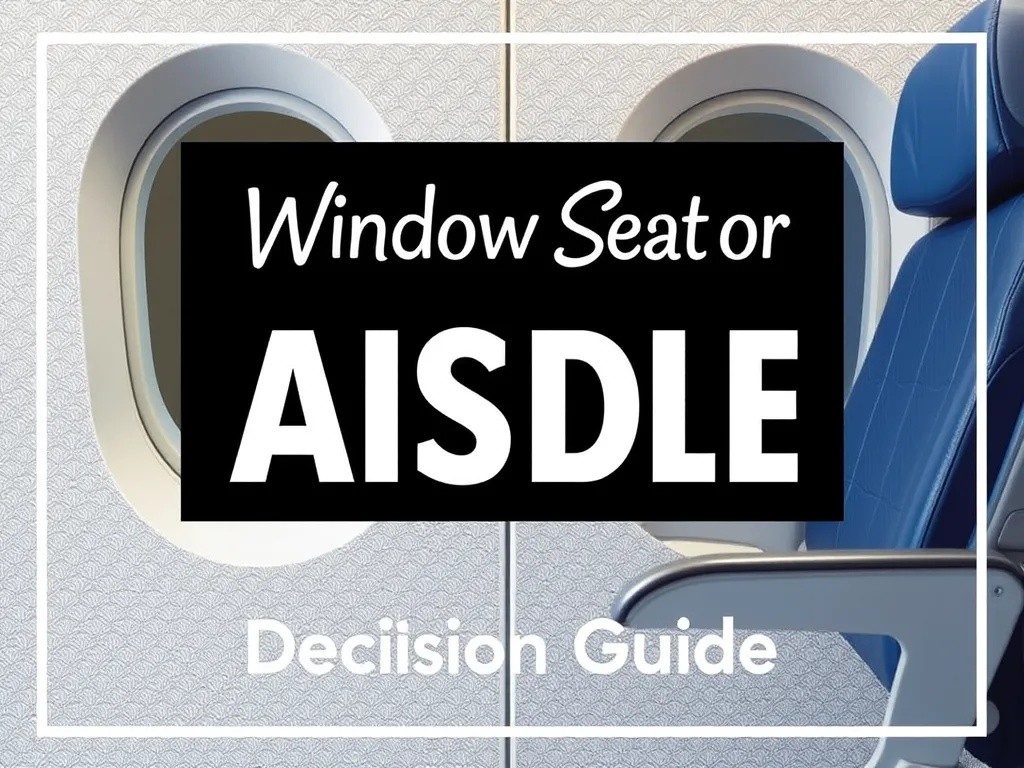The age-old debate between window and aisle seats has divided travelers for decades. This seemingly simple choice can significantly impact your flight experience, affecting everything from comfort and convenience to your ability to sleep or work. Whether you're a frequent flyer or an occasional traveler, understanding the advantages and disadvantages of each option will help you make the best decision for your next journey.

The Case for Window Seats
Window seats hold a special place in the hearts of many travelers, offering unique benefits that aisle seats simply cannot match.
Unmatched Views and Photography Opportunities
The most obvious advantage of a window seat is the view. From watching the sunrise above the clouds to capturing stunning aerial photographs of landscapes below, window seats provide visual experiences that make flying memorable. For photography enthusiasts and nature lovers, this alone can be worth any trade-offs.
A Wall to Lean Against
Window seats offer a natural headrest against the fuselage, making it easier to sleep during flights. You can position yourself comfortably without worrying about your head falling into the aisle or onto your neighbor's shoulder. This physical boundary also provides a sense of personal space and privacy that aisle seats lack.
Control Over the Window Shade
Having control over the window shade means you can adjust the lighting to your preference. Whether you want to keep it open to enjoy the view or closed to create a darker environment for sleeping, you're in charge. This small detail can make a significant difference in your comfort level.
Fewer Disruptions
Window seat passengers don't need to stand up when seatmates need to use the restroom or stretch their legs. This means fewer interruptions if you're working, sleeping, or watching a movie. You can settle in and stay settled for the duration of the flight.

The Case for Aisle Seats
Aisle seats come with their own set of compelling advantages that make them the preferred choice for many seasoned travelers.
Freedom of Movement
The biggest advantage of an aisle seat is unrestricted access to the aisle. You can get up whenever you need to without disturbing other passengers. This is particularly valuable on long-haul flights where frequent movement helps prevent discomfort and reduces the risk of deep vein thrombosis.
Extra Legroom
Aisle seats provide the opportunity to stretch one leg into the aisle occasionally, offering relief during cramped flights. While you need to be mindful of passing service carts and other passengers, this extra space can make a significant difference in comfort, especially for taller travelers.
Quicker Boarding and Deplaning
Aisle seat passengers typically have faster access when entering and exiting the aircraft. If you have a tight connection or simply want to get off the plane as quickly as possible, an aisle seat provides a strategic advantage.
Easier Access to Overhead Bins
Storing and retrieving items from overhead compartments is much simpler from an aisle seat. You won't need to reach awkwardly across other passengers, and you'll have better access to your belongings throughout the flight.
Factors to Consider When Making Your Choice
Flight Duration
For short flights under three hours, the choice matters less since you'll spend minimal time in your seat. However, on long-haul international flights, your seat selection becomes crucial. Window seats may be better for overnight flights where you plan to sleep, while aisle seats might be preferable for daytime flights when you'll want to move around more frequently.
Your Physical Needs
Consider your body type and any medical conditions. Tall passengers or those with long legs often prefer aisle seats for the extra legroom. Individuals who need frequent bathroom breaks, whether due to medical conditions or personal preference, will find aisle seats more practical. Those prone to motion sickness might prefer aisle seats as well, as they offer better airflow and less visual reference to the plane's movement.
Work Requirements
If you plan to work during the flight, consider which seat facilitates this better. Window seats offer more privacy and fewer disruptions, making them ideal for focused work. Aisle seats provide easier access to your bags and the ability to stand and stretch when needed, which can help maintain productivity during long flights.
Travel Companions
Traveling with others changes the equation. If you're flying with a companion, one of you taking the window and the other the aisle creates a buffer zone. Families with children might prefer window seats to keep little ones entertained with the view and contained away from the busy aisle.
The Middle Seat Reality
While this guide focuses on window versus aisle, it's worth acknowledging that middle seats exist. Generally considered the least desirable option, middle seats lack the benefits of both window and aisle positions. However, modern etiquette suggests that middle seat passengers deserve both armrests as compensation for their less favorable position.

Making Your Final Decision
The ultimate choice between window and aisle comes down to your personal priorities. Are you seeking a cocoon-like space for rest and contemplation, or do you value freedom of movement and quick access? Consider the specific circumstances of each flight rather than committing to one preference for all situations.
Many frequent travelers develop different preferences based on flight characteristics. They might choose window seats for overnight international flights where sleep is the priority, but select aisle seats for shorter domestic flights where convenience matters more.
Remember that seat selection is just one aspect of a comfortable flight. Regardless of your choice, factors like legroom, proximity to restrooms, and distance from galleys and exit rows also play important roles. Modern airline booking systems often provide detailed seat maps that help you evaluate these factors before making your selection.
The window versus aisle debate will likely continue as long as people fly. Both options offer distinct advantages, and neither is objectively superior. By understanding what each seat type provides and honestly assessing your own needs and preferences, you can make informed decisions that enhance your travel experience, one flight at a time.
